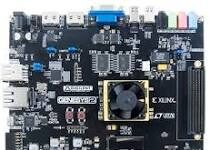The booming applications of light radar technology are numerous. This technology is already changing the way we live, helping to improve our lives in a variety of different ways. It’s already a critical component of autonomous vehicles and 3D printing, and it’s set to revolutionize the way we build things and travel. In the coming years, there are more exciting applications of this technology than ever before. If you want to learn more about how this technology is changing the world, check out these three examples!
One of the most popular applications of this technology is mapping. It can be used to make virtual 3D representations of an area. For example, you can create a virtual tour of a tourist attraction by using the data collected with this technology. The precise representation provided by this technology makes it an essential tool for architects and other professionals in the construction industry. These applications can improve the design of buildings and landscapes and help protect the environment.
One of the most common applications of LiDAR technology is road mapping and planning. The transport industry relies on this technology to map the structure of a road and determine its length against the terrain. In addition to mapping the layout of roads, LiDAR is also used to map oil deposits. The laser pulses are able to penetrate clouds and return data on their statistics. The technology can even be used in a dangerous situation, like a coronavirus pandemic.
Another common use of this technology is road mapping and planning. It helps the transport industry map the length of a road against different terrains. It also allows for detailed mapping of oil deposits. This technology can be used on flat terrain and can be useful in flood-prone areas. It can also be used on flat surfaces, which makes it very effective for mapping. This technology is rapidly becoming the new standard in mapping and planning.
In the field of agriculture, LiDAR mapping can reveal valuable information about ancient ruins and historical landmarks. For example, LiDAR pulses can detect the thickness of a forest canopy and the ground beneath it. This technology can also be used in forestry to estimate fuel capacity and root expanse. For the military, LiDAR technology is used for security operations. Aside from these applications, it can be used for a variety of purposes.
Currently, LiDAR technology is used in a number of different fields. Its primary use is in forest mapping. Its data can help forest experts identify potential deforestation areas. Its data can also be used to monitor farmland for future crop farming. As an example, LiDAR can determine the viability of a particular crop by determining its optimum height and soil profile.
For example, LiDAR can be used for mapping land in real-time. It can identify areas where deforestation is a problem and help forest experts curb this deforestation. Its data can also be used to monitor the land for potential crop farming. For example, bathymetric LiDAR can capture hydrographic data. Unlike traditional methods, it can be done in a matter of minutes.
Besides Earth-scanning, LiDAR can also be used in other environments. It is used by NASA in the Apollo program to map the moon. In 2001, the system was used to measure the vegetation on Mars. The technology is so accurate, it can be installed on airplanes or cars. However, LiDAR is not only useful in Earth-scanning. It can also be used for other applications.
Another example of LiDAR technology is in autonomous vehicles. In the Apollo program, retroreflectors on the moon reflected lasers from Earth. The technology is capable of mapping celestial bodies, including Mars. It has been used to generate a global topographic survey of the planet in 2001. It can also be used for aerial scanning. In the future, people will be able to use this technology in a number of ways.











